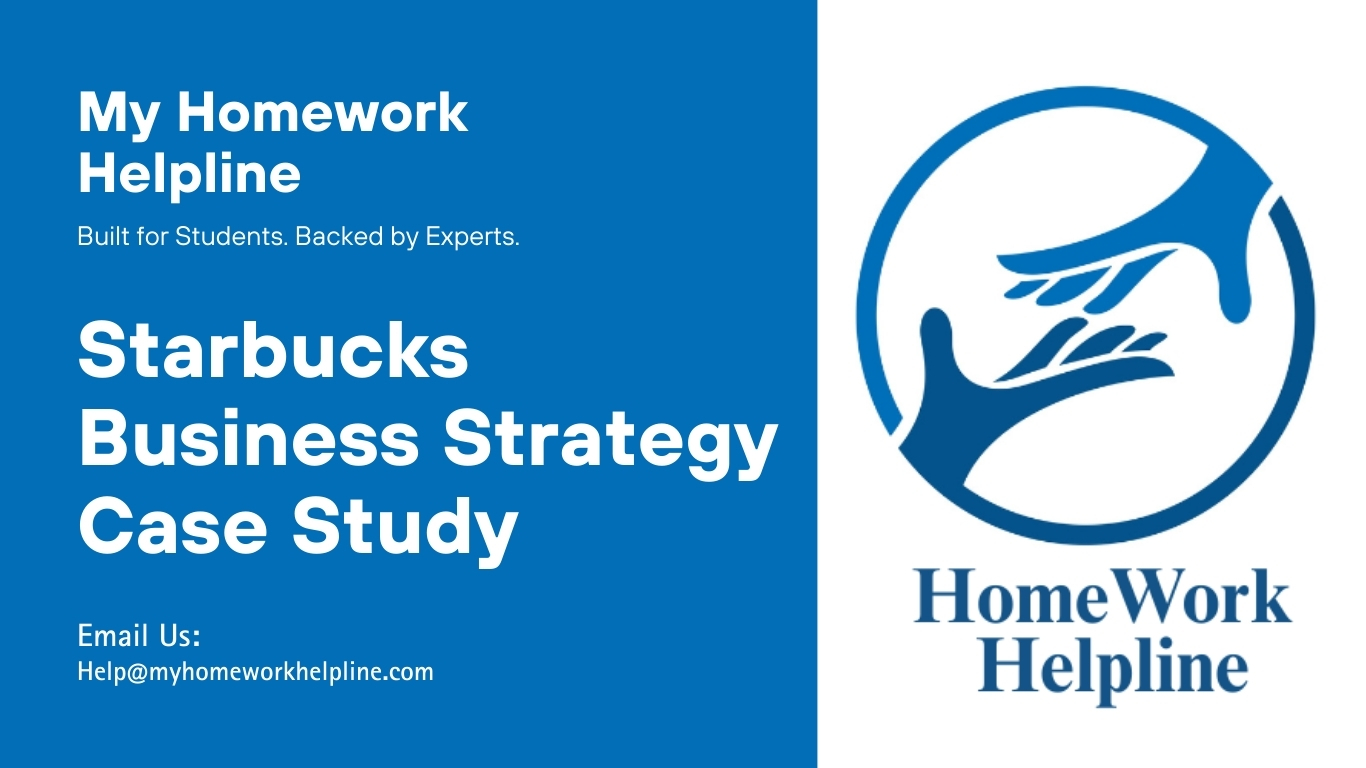Starbucks Case Study: External and Internal Analysis
External Environment Analysis
General External Environment
The legal, economic, technical, social, and political pressures are part of Starbucks’ broader external environment. Starbucks must follow all applicable local, state, and federal laws regarding labor and employment, health and safety, and consumer protection. In terms of the economic environment, Starbucks must keep an eye on broader factors (like inflation, unemployment, and interest rates) and corporate and industry-specific economic forces. Furthermore, technological trends, including the rise of digital media, online shopping, and mobile devices, are significant to Starbucks (Grant, 2021). Starbucks has a societal challenge in keeping up with the ever-shifting preferences of its customers and the developments in the food and beverage industries. And last but not least, Starbucks must be conscious of political factors like trade pacts, laws, and government policies.
Working on a management case study or strategic analysis assignment? Our team at My Homework Helpline’s management homework assistance can help you with SWOT, Porter’s 5 Forces, competitor reviews, and business environment research. Whether it’s a Starbucks case study or another company project, we provide personalized support for case study writing, assignments, and academic projects. Get expert guidance today and boost your academic performance!
Industry Analysis
Starbucks operates in the food and beverage industry. Businesses in this sector offer drinks like coffee and tea and food products like snacks and pastries. Typically, businesses in this sector operate as a chain of retail outlets where consumers may unwind with a drink and some snacks. With over 30,000 locations in over 80 countries, Starbucks dominates the global food and beverage market (Kee et al., 2021).
The threat of New Entry
Since so many coffee drinkers and companies sell coffee, the coffee business is a very cutthroat and competitive sector. It would be challenging to get into the market with a new product that could compete with an established behemoth such as Starbucks, which is renowned worldwide. If a new competitor wanted to provide the same things that Starbucks does, it would not be easy to do so successfully. In addition to this, the firm has a devoted customer base.
Competitive Rivalry
Starbucks differentiates itself from other cafes by achieving more significant margins from selling its specialty drinks. This is because it uses economies of scale and has a distinct cost structure compared to other competitors in the market. They pay lower prices for the goods when they buy them in larger quantities, such as dairy products, syrups, paper commodities, etc.
Threats of Substitutes
Starbucks has to consider the vastly different availability of other drinks, such as soda, caffeinated beverages, squeezes, or water, compared to espresso. Nevertheless, this is not a significant concern for Starbucks since it offers a wide variety of these beverages, the most popular of which is tea, a direct substitute for coffee. Starbucks has stepped in to fill the need, selling this product under its Tazoâ® Tea brand.
Consumer Bargaining Power
Despite the pandemic caused by the Coronavirus, the coffee business continued to expand thanks to both the convenience of online ordering and the sector’s overall scale (Grant, 2021). Yet, if customers have trouble making ends meet, they may be forced to search for less expensive alternatives or drawn to the enormous and developing at-home coffee marketplaces. When several options are available, a customer has a great deal of negotiating power.
Supplier Bargaining Power
It is a point of pride for Starbucks to declare that none of its coffee comes from unethical sources (Davis et al., 2018). Starbucks provides free training for its suppliers to assist them in maintaining correct agricultural techniques and distributing high-quality coffee trees that are disease-free. Those who meet the requirements to become a Starbucks supplier acquire the resources necessary for success, and those who receive prizes receive further incentives.
Competitive Analysis
Main Competitors
The primary businesses that compete with Starbucks would vary due to the market segment in which Starbucks operates. Given the nature of their cafés, their primary competitors would be chains like McDonald’s and Dunkin’ Donuts, convenience stores like 7-11, and independently owned coffee shops (Rodrigues, 2019). In terms of their whole and ground beans, Keurig Green Mountain, Private Label, Folgers, and Dunkin all come out on top when it comes to coffee for use at home.
Key Success Factors
Compared to other coffee shops and k-cups, Starbucks stands out because of its well-known brand name. Its emblem is so well-known that it doesn’t even need a view from the consumers; instead, the company relies on its products’ high quality to win over new clients. Starbucks hires and develops only the most talented individuals because the firm understands that the quality of its workforce directly impacts the customer experience. That helps them stand out from the crowd. In light of the company’s recent financial expansion, financial stability is a critical success component.
Internal Analysis
Capabilities
Starbucks relies on a wide range of assets and processes to provide its goods and services, all of which contribute to the company’s extensive and diverse tangible capabilities. Everything from the shops to the beans and equipment used to manufacture the coffee and other drinks sold there to the employees and the customer service systems in place to keep it all running smoothly is part of this equation. Starbucks’ intangible capabilities consist of its well-established brand name recognition, customer devotion, and highly developed supply chain and marketing expertise.
Core Competencies
The Starbucks Company brand is the most recognized and trusted name in the coffee, tea, and espresso sector. Throughout time, it has grown in both size and the number of regular customers it serves. The firm is using innovative methods of promotion. Starbucks does not spend much on marketing because it knows its loyal customers will bring in customers independently (Grant, 2021). What sets Starbucks apart from its rivals is not the quality of the coffee itself but rather the value of the Starbucks brand and the experience provided by the barista.
For the lacking competency, Starbucks sources its coffee ethically from around the globe (Davis et al., 2018). However, several of the nations they source from are experiencing civil to national wars, which might compromise the quality of their goods and cause a supply shortage. To guarantee that its suppliers get adequate compensation, Starbucks should prioritize enhancing its supply chain and attempting to establish its distribution and processing units.
Value Chain Analysis
The value chain’s manufacturing and retailing stages are robust for Starbucks. Mainly, Starbucks is well-known for its high-quality coffee beans and the network of retail outlets it operates, each offering customers a unique experience. The distribution link in Starbucks’ value chain is where the company falls short. Starbucks indeed has a supply chain, but it is not especially compelling. The corporation has been criticized for not doing more to lessen its adverse effects on the environment. In addition, Starbucks does not have a well-developed presence in internet shopping, and its goods are missing in a wide variety of locations outside its shops.
SWOT Analysis
By prioritizing the customer experience and establishing a robust loyalty program, Starbucks has been able to establish a distinct edge in the marketplace. Starbucks guarantees its customers a pleasant experience by using only high-quality equipment, from coffee beans to espresso makers (Zhang & Xue, 2022). Besides, Starbucks offers a thorough loyalty program that rewards and incentivizes customers with benefits like free beverages and food, discounts, exclusive goods, and hospitable baristas. Customers’ repeated visits to Starbucks stores attest to the success of this loyalty program in keeping Starbucks ahead of the competition.
Starbucks has struggled in recent years due to flaws such as its expensive supply chain, lack of product diversification, and over-reliance on a small number of major regions. Starbucks has failed to take advantage of growth chances in other areas because it has focused too narrowly on existing ones, such as the United States. However, Starbucks’ profit margins are poor because of its expensive supply chain, which includes things like buying organic coffee beans and maintaining a large retail presence. Moreover, Starbucks’ struggle to differentiate itself in a crowded market is a result of the lack of difference across the company’s many goods, including its coffee drinks and food offerings.
By establishing shops in new parts of the world, Starbucks may increase its presence in the coffee industry overall. This includes markets in the United States and abroad, such as those in Europe, Asia, Australia, and the Middle East (Rodrigues, 2019). Starbucks can introduce a new line of products and avail potential new offerings to its customers. Marketing, advertising, and collaborations are all avenues that Starbucks might pursue to extend its worldwide footprint and customer base.
Competition, shifting customer preferences, and economic downturns are just some of the threats that Starbucks must guard against. To be successful, the business must provide both competitive costs and high-quality goods and services (Zhang & Xue, 2022). It must also foresee and respond to changing customer preferences, such as the increasing interest in quick and nutritious diets. Third, Starbucks has to keep an eye on the financial markets and make sure it has enough cash on hand and savings to weather any economic storms that may come its way.
SWOT Analaysis Matrix
| Strengths (S)
· Brand recognition · Unique customer experience · Quality products |
Weaknesses (W)
· Costly supply chain · Uneven worldwide distribution · Lack of differentiation |
| Opportunities (O)
· New variety of products · Expansion to new locations · Focus on marketing |
Threats (T)
· Competitive pressures · Changing customer tastes · Economic downturns |
References
Davis, D., Kaplinsky, R., & Morris, M. (2018). Rents, power and governance in global value chains. Journal of World-Systems Research, 24(1), 43-71.
Grant, R. M. (2021). Contemporary strategy analysis. John Wiley & Sons.
Kee, D. M. H., Hidayah, N., Syamilah, H., Nasuhah, N. N., Syasya, N. H., & Norathirah, W. (2021). How Starbucks maintain its competitive edge?–the secret of its success. Journal of the Community Development in Asia (JCDA), 4(2), 34-43.
Rodrigues, M. A. (2019). Equity Research-Starbucks (Doctoral dissertation, Universidade de Lisboa (Portugal)).
Zhang, L., & Xue, B. (2022). Strategic Analysis of Starbucks. Financial Engineering and Risk Management, 5(7), 106-113.

